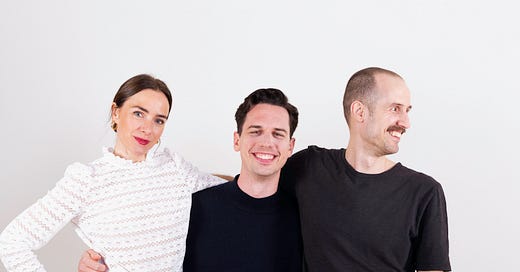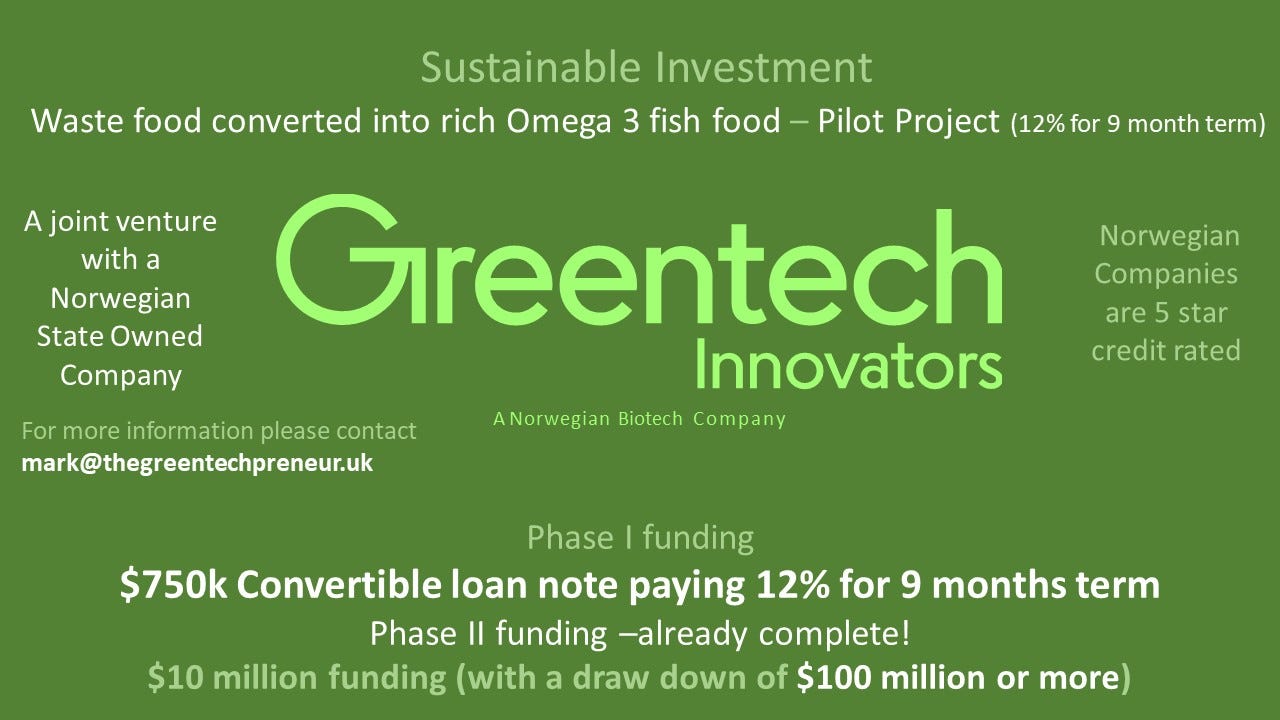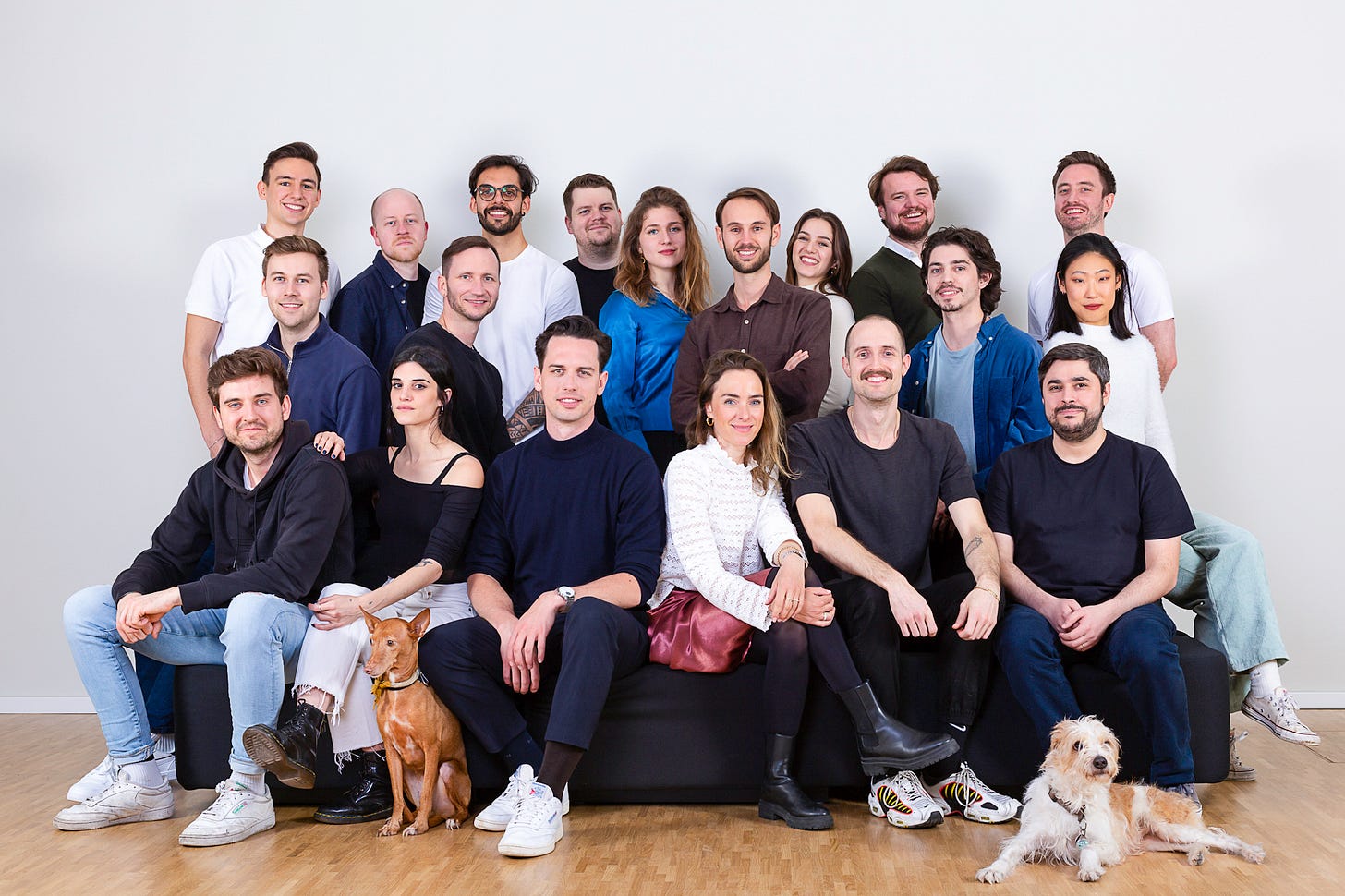Harmony is finally coming to the carbon markets: how this marketplace platform delivers clarity
CEEZER is a marketplace platform that brings harmony, data, and transparency to both buyers and sellers in the carbon market
A warm welcome to the 40 new subscribers who have joined since the last edition!
If you haven’t subscribed, sign up below to join a network of over 2,800 climate tech entrepreneurs and investors. The Green Techpreneur (GT) is a comprehensive platform with a marketplace and magazine to help your climate startup raise funds and gain the actionable insight you need to make your mark on the planet.
Investors take note!! We have a fantastic opportunity for you below to make money while making a real difference in tackling food waste. The Norwegian government backed startup listed below already has $10 million in phase II funding complete and is now looking for $750k in a convertible loan note.
For this issue of The Green Techpreneur, I spoke to the founder of CEEZER, Magnus Drewelies, to learn more about his mission to harmonise a fragmented carbon market as the only platform worldwide that brings together projects from all major certifiers.
The thriving carbon market can provide the funds needed to make real change possible on the planet, but it’s been in the news for all the wrong reasons – as a bedrock for greenwashing and inefficient use of funds. Even carbon credits verified by the world’s leading carbon certifier, Verra, have recently been exposed as largely ineffective. The scandals and exposes have rocked the carbon market to the extent that it’s had a real financial impact: demand and prices for offsetting have dropped, with some carbon credit traders are writing off investment.
Well-meaning buyers have been left in real quandary: regulation requires companies to offset with carbon credits, but carbon projects have proven too complex, so far, to be effectively regulated so the odds of purchasing ineffective credits are, sadly, high.
Against this backdrop, German-based startup CEEZER has built a buyer/seller marketplace platform to cut through the confusion and noise around carbon quality and buying decisions; 3.5 million data points, AI, and a scientific peer reviewed process make carbon projects easily comparable.
When Magnus started building CEEZER along with co-founders Dr. Carla Woydt and Hannes Nutzmann in early 2022, market pull was so strong that they were onboarding large customers within just a few months: “That was a good validation point,” says Magnus, “because these companies can work with anyone - there's no reason for them to go with an early startup.”
His journey into green techpreneurship first took shape during his studies in Sustainable Development. While exploring mangrove restoration projects in Madagascar, he saw the incredible potential for carbon capture and nature restoration. At the same time, he realised companies weren't investing in the space because buyers lacked information: "It was crazy that so much good work was happening on the ground with so little interest, and I realised I needed to look more on the buyer side."
Four and a half years of groundwork followed, working with corporations on their climate strategies, looking at their pain points and how they made decisions around climate action and supply chain mitigation. These collaborations highlighted a common challenge: "It showed the same problems that all companies have: understanding what they invest in.
“It’s very abstract, right? It’s non-regulated. It’s very unusual for companies to invest in a space like this. The impact happens on another part of the earth. There needs to be more data and scrutiny on making these decisions, and that’s what inspired me to start CEEZER - to provide the right tooling and data.”
Magnus’ idea that companies needed to be given the similar toolkit for investing in and creating a carbon credit portfolio, as investment platforms provide for investors, gained such fast traction that within just 18 months, along with co-founders , he witnessed skyrocketing demand and grew to a 30-strong team.
"Ultimately, it comes down to very pragmatic investment decisions. How can you get companies to commit to the right technologies and invest in them when the outcome is less tangible than many alternatives? And how can you ensure that your impact is the best possible climate impact, not only now but in five and ten years? This is what we want to do.”
Here’s an inside look at how the team built a unique offering that approaches the carbon market in a data-driven, holistic way, eliminating confusion around all the different carbon market certificates and standards.
If I were a CEEZER user, what data would help my investment in climate solutions?
Carbon project content and impact overview
There are many new carbon startups because the market has snowballed and technologies are evolving. And so, as a buyer, even if you have an in-house team, it gets confusing, right?
We leverage data - we have over 3.5 million data points and work with seven big registries. We use AI analyse and harmonise all their specific methodologies and make them comparable. These are data points with an objective market view that sorts the underlying activity, the scientifically proven risk, and the impact it can have.
When you log in to CEEZER, you see it all concurrently, so you can start looking at it from a content and impact perspective. As a buyer, if you want to do permanent removals, you can filter for that. That changes your view because you move away from getting a small fraction of the market to comparing it globally to make the best decision. This helps you tailor a buyer's portfolio because there’s no ‘best credit’ - it depends on your goal. It’s about mixing and matching and building a portfolio that optimises for risk and the impact you want to have.
In-depth screening and independent review
We do in-depth screening and work with rating providers, so you will always have an independent view of the specific project quality. We work closely with an advisory board and use peer-reviewed data. We were always careful not to rate ourselves to avoid a conflict of interest. That’s a problem this market has had for a long time. We’re not tied to any credit or seller but can explain and materialise across all standards to give a harmonised overview and idea of what it is you’re buying.
How did you fine tune the idea to find product-market fit?
I started reconnecting to the market in late 2021 because there was an inflection point in late 2020 when companies began to dig into climate more. The time was ripe to give them something. We interviewed many carbon project developers and larger companies that were new to having sustainability teams.
From a startup perspective, the first thing to understand was, did we get the product-market fit right? Do we solve a real problem - are people willing to commit and use it? Luckily, we had that feeling early on, so we started building CEEZER at the beginning of 2022.
It's only been a year and a few months. We had many strong hypotheses, and we had to think about what our platform should look like in a field where there is lots of innovation happening. We built this platform while simultaneously engaging with our customers. Before long, we started onboarding large customers. On the buying side, we have a decent roster - large, midsize, and smaller companies.
A non-BS approach to the market
We took a non-BS approach to the market and said, 'Listen, we're going to give you the data we know we have, and we'll work with you to figure out the best solution.’ That went well.
We closely collaborate with companies to help them build portfolios long-term for the best climate impact - not only now but in five and ten years.
Now, we're scaling this up on both sides. We have a tremendous community of developers; I'm super happy about that. They range from established product developers in the carbon space to new players who are just getting proof of concept done so they can start offering solutions to the market - it’s amazing to see that works.
What was your fundraising journey like?
We drafted a rough model, and fundraising for us was almost organic - I wanted validation of whether this was a good business idea. My best guess was to talk to VCs because these people look at businesses all day! I talked to three VCs who I felt might have the right expertise, and to my surprise, they all wanted to fund the first round.
If people plan on setting up a company, I always recommend this. Just go and talk to a VC - these people know what they are doing. We have a super close relationship, and I look at them like a partner in this - they have a different view.
We raised the first round in late 2021 before anything was built. Clearly, we had a strong view and idea of what we wanted to do.
What were the hardest moments in the journey?
We started building a product in a constantly changing market and market dynamic kept evolving. In the early days, some supply and buying partners suddenly changed their minds after weeks of discussion and commitments. That felt hard because, in the beginning, you have little proof points of what you're doing. So, a 'no' from a large partner can be hard.
What would you do differently if you could go back and start again?
CEEZER is all about data and a good product incentivising impactful climate action. To get started quickly, we worked with external agencies to build parts of the first MVP. It's something that many recommended (except for actual engineers, who we should have listened to!).
It ended up being so much more complicated and probably at least as expensive as building our team from the start.
If I could do it again, I would keep these things in-house from the beginning. Especially in the early days, quick iterations and changes are so important.
What are your top 3 tips for green techpreneurs?
Learn to separate signals from noise
Especially in the early days, news in the market can make you challenge your hypotheses quickly. Sometimes, it's important to react swiftly and adapt - more often, staying true to your course is important.
Opt for common-sense solutions
When in doubt, stick to what makes (common) sense. It's impossible to know all the answers with 100% certainty. Focusing on what makes sense within the limits of what you know about your market, customers, or product is helpful.
No one wants to spend too much or take a lot of risk without reward, and everyone likes an easy product.
Prioritise self-care
I’m still learning in this department, but it is easy to forget to recharge and regain energy when you like what you do. It doesn't serve the mission or the company if people aren't energised. It's not easy to step out - but it can be an excellent investment of your time.
Further Reading:
I interviewed ASSEAL founder Chris Rea on his ground-breaking, automated, net-zero factory back in 2021.
His factory of the future has now been featured in The Times.
Meet the College Graduates Bringing Breakthrough Solutions to End Fast Fashion Waste.
How to Scale a Niche Product While Navigating Being Business and Life Partners
Make a Connection
Whether you’d like to find a mentor, an employee, a job, a business partnership, or just meet someone new over a virtual coffee who’s just as passionate about building greentech businesses – hit the button below and I’ll post a shout out for you in the next newsletter.
Thank you for reading and listening to The Green Techpreneur.
Have a great weekend! 🥂
#SparkTheTransition,
Marianne
P.S. If you enjoy reading the GT, please share this article to help spread the word!









